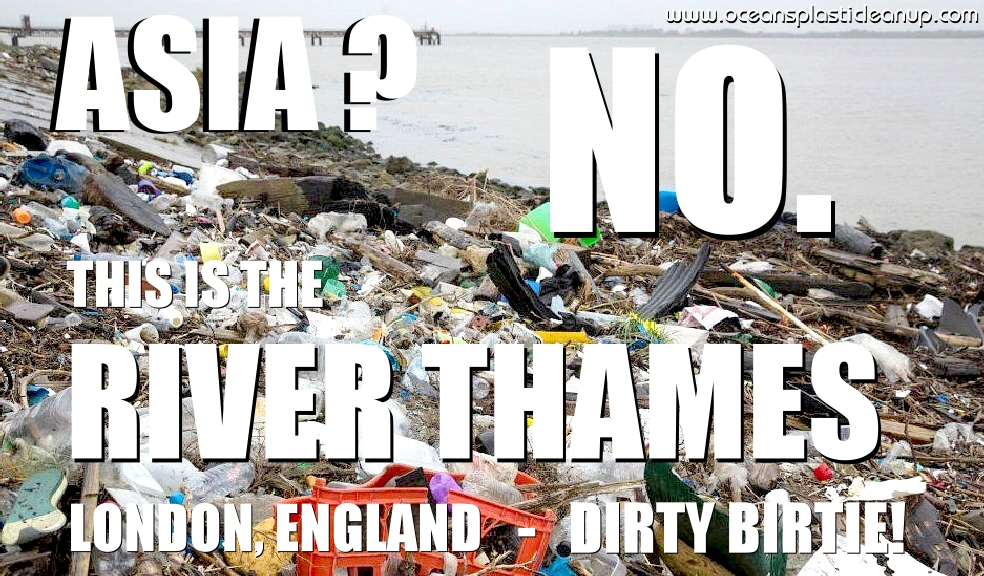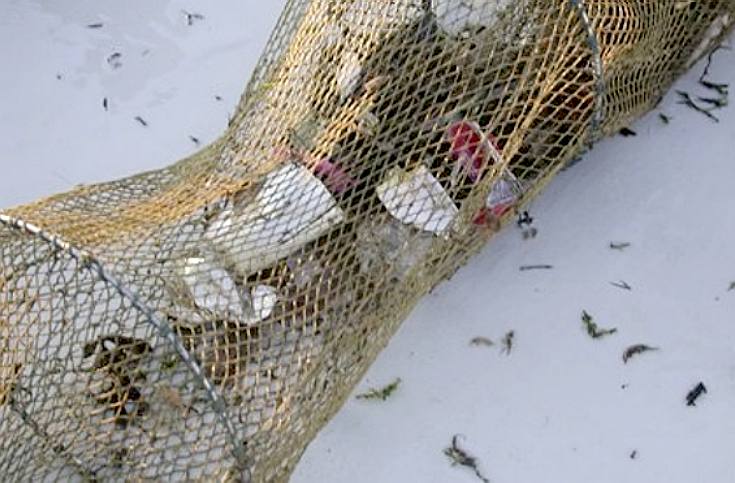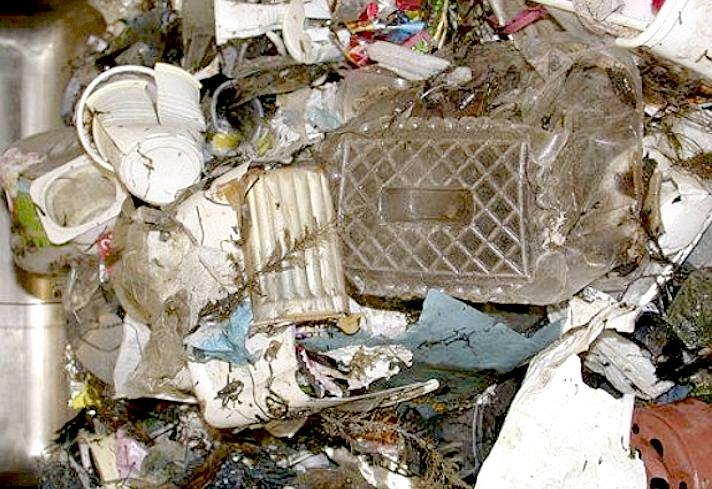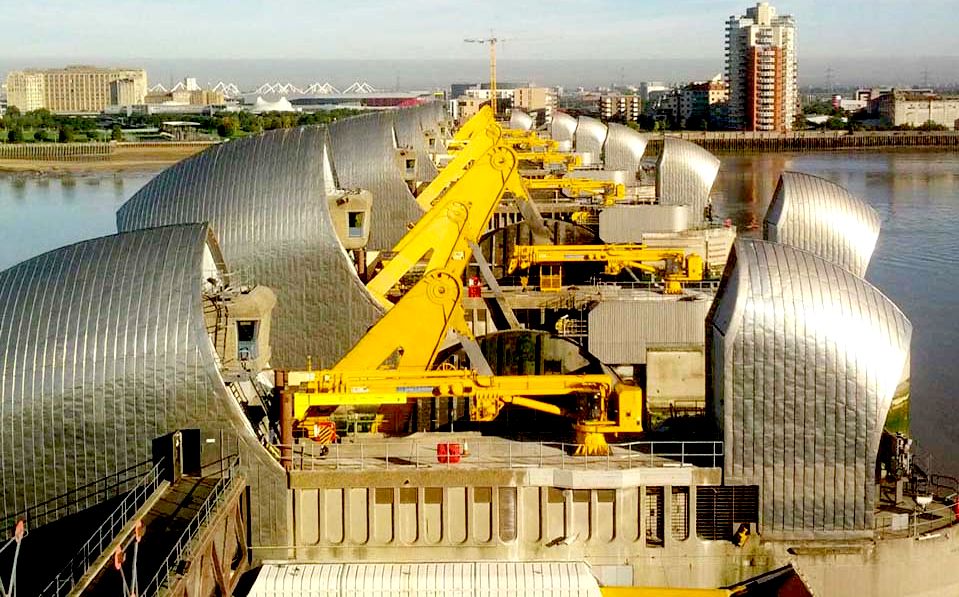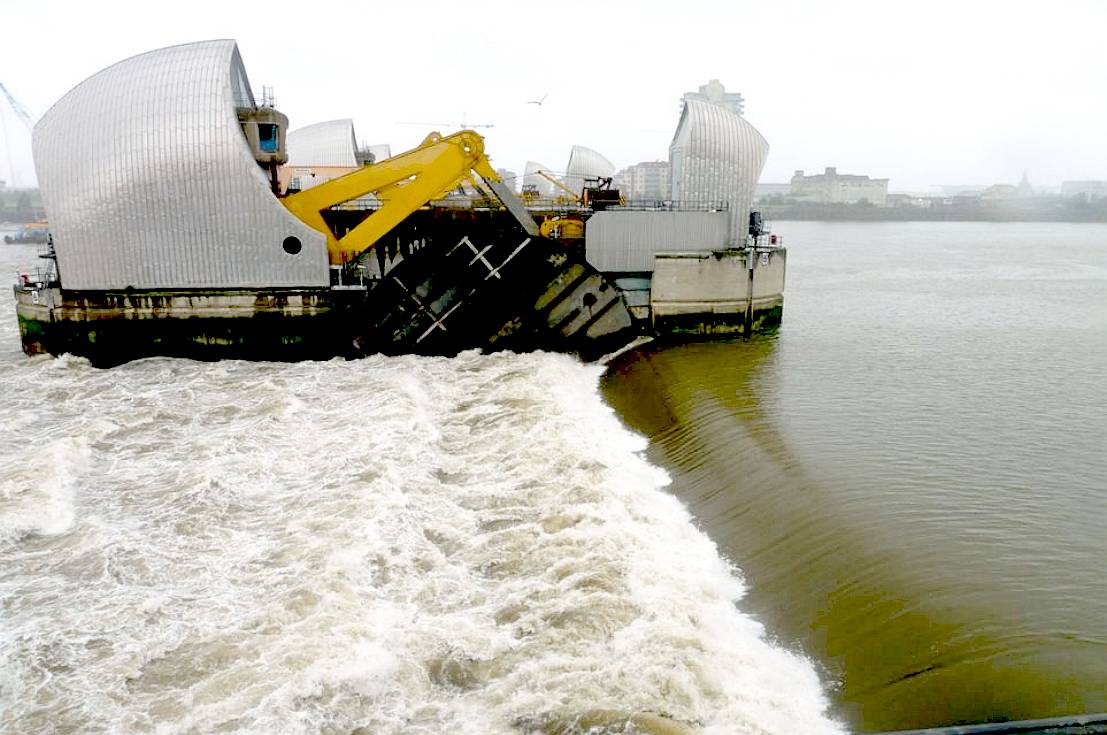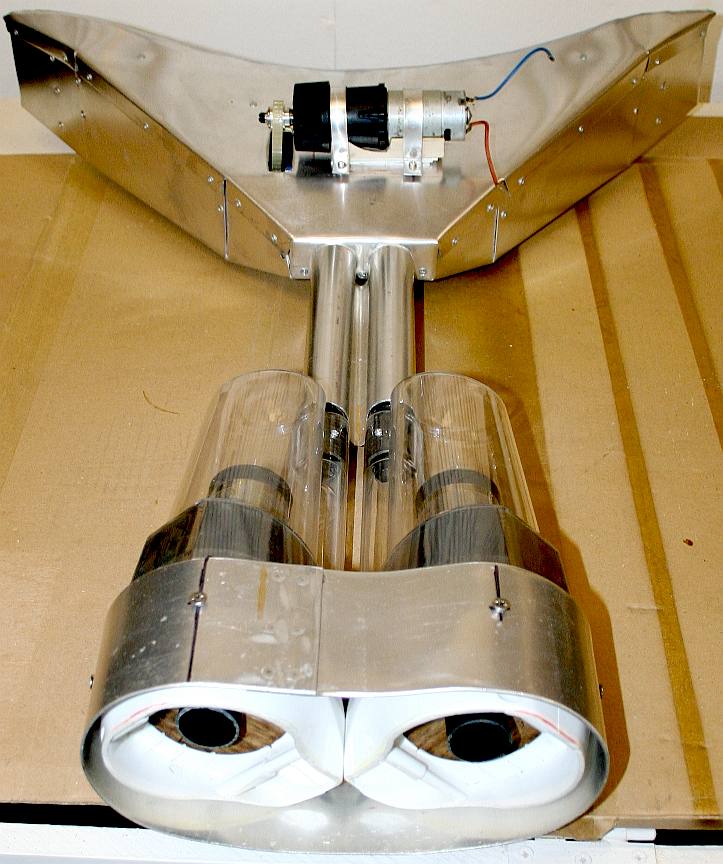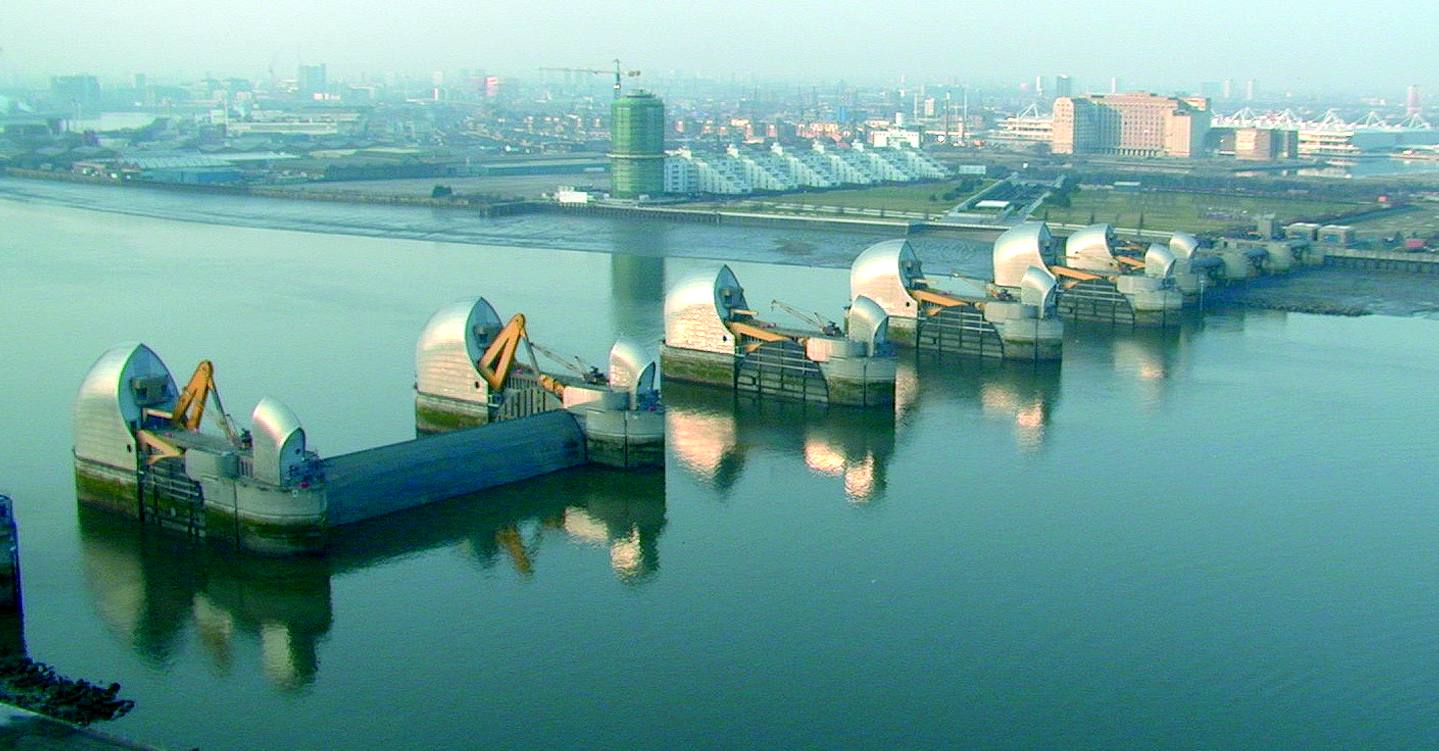|
THE RIVER THAMES
|
|
MARCH 2021 - 7SEVEN POINT PLASTIC PLAN
Almost all plastic waste entering the ocean comes from rivers. Ninety percent 90% comes from just ten of the filthiest waterways in the world. But there are thousands more rivers contributing to a continuous stream of micro fibers, mostly from man made fibres used in clothing. Much of the work on microplastics has been carried out in seas and oceans rather than rivers. As there is no large scale cleanup of the plastic swirling in the gyres, and no filtration machines capable of dealing with micro plastics (since SeaVax & RiverVax projects died from lack of funding in 2020), we should be trying to turn off the plastic tap at source.
The
River Thames has some of the highest recorded levels of microplastics for any river in the world.
Scientists have estimated that 94,000 microplastics per second flow down the river in places.
After the Second World War, humans were finally given the right to life internationally and legally, via the
1948 Universal Declaration of Human
Rights, brought into being by the United Nations members as signatories. This came about because of the atrocities committed by Nazi Germany and others countries during hostilities, ending with
the US dropping atomic bombs on Hiroshima and Nagasaki, the mass taking of life by nuclear
weapons.
1. Supermarket
packaging transformation (back) to paper predominantly
JANUARY 2 2014 - THE GUARDIAN - PLASTIC WASTE WILL DEVASTATE MARINE LIFE
An unseen stream of plastic rubbish flowing along the bed of the river Thames and out into the North Sea will have far-reaching effects on marine life, a new report indicates.
The report said the data represented only a snapshot, and as such it was difficult to estimate the volume of litter that was actually entering the North Sea this way. But scientists said the figures highlighted an underestimated problem.
THE (GENERALLY ACCEPTED) TWELVE MOST POLLUTED RIVERS IN THE WORLD
Let us not forget that in the fight against ocean pollution, it is the pollution from rivers that is discharged into the Atlantic Ocean, Indian Ocean and Pacific Oceans that is potentially the most harmful is left unchecked. Hence, the most wanted list of river authorities who need to think hard on cleaning up their act as the starting point for cleaner oceans:
1. Citarum River, Indonesia - The Citarum River is known as the most polluted river in the world and is located in West Java, Indonesia.
2. Ganges River, India - The Ganges River is considered the most sacred river in India by the Hindus. It is the third largest river in the world and it is believed that its water can cleanse the sins of people.
3. Mantanza-Riachuelo River, Argentina - The river is located in the Buenos Aires Province of central-eastern Argentina and is more than 60 kms long. The river is also known as Slaughterhouse River.
4. Buriganga River, Bangladesh - Buriganga is also known as the Old Ganges in Bangladesh. Bangladesh is one of the most densely populated countries around the world and is right now suffering from every kind of pollution that exists.
5. Yamuna River, India - The river is crystal clear and blue near its source in the Himalayas but as the river flows down the water becomes extremely polluted with sewage, industrial garbage, agricultural run- off etc.
6. Jordan River, Israel - The Jordan River originates from the Anti-Lebanon and Mount Hermon mountain ranges covers a distance of 223 km. The river has severely deteriorated especially the lower reaches of Jordan are full of untreated sewage and contaminated water flowing from agricultural lands.
7. Yellow River, China - The Yellow River of China is drying up fast due to expansion of factories, cities, agricultural farms etc. and whatever water is left is contaminated badly. The water is so toxic that it is not fit for agriculture.
8. Marilao River, Philippines - The Marilao River flows through the Bulacan Province Philippines and empties in Manila Bay. The main sources for polluting this river are tanneries, textile factories, piggeries, gold refineries and municipal dumps.
9. Sarno River, Italy - The Sarno River is one of the most polluted rivers in Europe. It flows in southern Italy near Pompeii and Naples. In recent years many cases of liver cancer have been reported which shows the level of degradation of the river.
10. Mississippi River, USA - The Mississippi River in USA is also known as the ‘Big Muddy’ as the water of this river is usually brown because of pollution. Crude oil spills reported in the river which has made the water toxic and is poisonous to the marine life. The river is a sewer for farmers and industrialists making it one of the most polluted rivers in the world.
11. Cuyahoga River, USA - The Cuyahoga River flows through Cleveland, Ohio and is known for having caught fire many times. The river is completely choked with oil, sludge, sewage and debris.
12. Pasig River,
Philippines - The Pasig river is a 27 km long river in Philippines which passes from west of Laguna de Bay and moves downstream to east of Manila Bay. This river
is termed biologically dead.
HUGE HYDRAULICS - You can see part of the mechanical workings of the Thames Barrier in the picture above. In the photograph below witness the enormous power of a body of water trying to achieve equilibrium.
PROPOSED SEAVAX RIVER POLLUTION (PART) SOLUTION
The only significant advantage to using SeaVax as a platform to develop a river cleaning solution, is that the vessel is powered by over 80kW of energy harvested from nature. This is important, because if the craft can be converted to clean effluent and metals from river water (not on the agenda at the moment, but we are willing to undertake studies if properly underpinned) whatever assistance that may provide is sustainable in energy terms, in a circular economy.
The most obvious hurdle in defining any kind of assistance to the beleaguered nations in this case is: How do you treat a billion liters of water divided into hundreds of locations. It looks as though the problem is insurmountable. But is it?
1. The first thing is to consider is to deploy several dozen ocean dustcarts to deal with surface litter that would otherwise find its way into the open ocean and feed the 5 main Gyres. This is not only doable but a must.
2. The second is to decide whether to deploy SeaVax oil spill boats to rivers that are known to be oil toxic.
3. The third is to undertake a feasibility study as to the possibility of modifying SeaVax units to deal with industrial waste and sewage at selected points of discharge. The issue here is likely to be volume where sedimentation tanks would need to be voluminous and SeaVax is a mobile solution. If deployed at known discharge points, that may negate the volume issue to some extent.
PROOF OF CONCEPT MILL & SINGLE STAGE FILTRATION - In this photograph you can see the experimental motorised mill head and hydro-cyclonic filtration chambers of the SeaVax test boat under construction. The full size version of this is 14 metres (44 feet) wide and includes two more stages of filtration that we cannot show here due to patent laws prohibiting publication before grant. This unit showed us what was possible and what to develop next. Nobody else anywhere in the world is developing such a system.
ACIDIFICATION - ADRIATIC - ARCTIC - ATLANTIC - BALTIC - BAY BENGAL - BERING - CARIBBEAN - CORAL - EAST CHINA ENGLISH CH - GOC - GULF GUINEA - GULF MEXICO - INDIAN - IOC - IRC - MEDITERRANEAN - NORTH SEA - PACIFIC - PERSIAN GULF RED SEA - SEA JAPAN - STH CHINA - PLASTIC - PLANKTON - PLASTIC OCEANS - SEA LEVEL RISE - UNCLOS - UNEP - WOC - WWF
AMAZON - BURIGANGA - CITARUM - CONGO - CUYAHOGA - GANGES - IRTYSH - JORDAN - LENA - MANTANZA-RIACHUELO MARILAO
- MEKONG - MISSISSIPPI - NIGER - NILE
- PARANA - PASIG - SARNO - THAMES
- YANGTZE - YAMUNA - YELLOW
LINKS & REFERENCE
Wikipedia Indian_Oil_Corporation IB Times India million litres untreated sewage polluting holy river ganga says report Inspired Economist 2015/01/14 India uses zero liquid discharge technology for Ganges river Haaretz Israel Ganga pollution news science Central Pollution Control Board of India listaka top 12 most polluted rivers in the world Hubpages politics what are the 10 Most Polluted Rivers in the World Listdose top 10 polluted rivers world Austro Indonesian Arts Program blog most polluted river in the world Citarum The Guardian environment 2014 January 2 plastic waste river Thames marine life report News BBC England London River Thames skimmers September 2007 http://news.bbc.co.uk/1/hi/england/london/6990610.stm http://www.theguardian.com/environment/2014/jan/02/plastic-waste-thames-marine-life-report http://www.austroindonesianartsprogram.org/blog/most-polluted-river-world-citarum-river-indonesia http://hubpages.com/politics/What-Are-the-10-Most-Polluted-Rivers-in-the-World http://listdose.com/top-10-polluted-rivers-world/ http://listaka.com/top-12-most-polluted-rivers-in-the-world/ http://www.cpcb.nic.in/water.php http://www.haaretz.com/israel-news/science/1.666846 http://inspiredeconomist.com/2015/01/14/india-uses-zld-ganges-river/ http://www.ibtimes.co.uk/india-million-litres-untreated-sewage-polluting-holy-river-ganga-says-report-1491715 http://asia.nikkei.com/Politics-Economy/International-Relations/China-India-rivalry-grows-over-infrastructure-projects https://en.wikipedia.org/wiki/Bay_of_Bengal
|
|
This
website is Copyright © 2024 Bluebird Marine Systems Limited.
The names Bluebird™, Bluefish™,
Miss
Ocean™, SeaNet™,
SeaVax™
and the blue bird in flight
|
